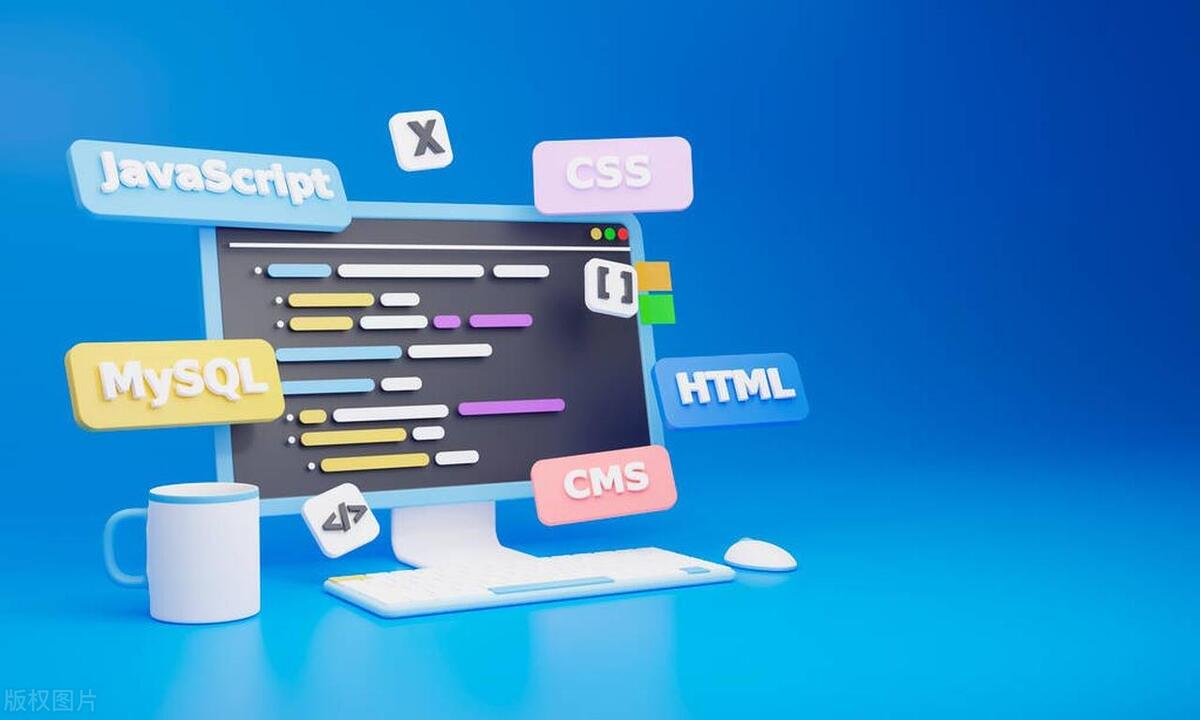To solve the problem of content overflow in web pages, you can use the CSS attribute to control it. 1. Use the overflow attribute to control the display of overflow content, such as overflow: hidden, and overflow: auto adds scroll bars when needed; 2. Set max-width and max-height to prevent too large images or media elements from causing misalignment, and combine object-fit to maintain visual consistency; 3. Use min-width and min-height to avoid too small containers affecting readability and interactivity; 4. Use text-overflow: ellipsis to display ellipsis when the text is too long to keep the interface neat. These methods can effectively improve the stability and user experience of web page layout.

Sometimes, you're styling a webpage, and suddenly something doesn't look right. Text spills out of its container, an image stretches weirdly, or a layout breaks entirely. One common culprit? Content overflow —especially when it's unexpected.

The good news is that CSS gives us tools to handle this. You don't always need JavaScript or complex workarounds. Let's go over a few practical ways to manage unexpected content overflow using basic CSS properties.

Use overflow to Control Clipping and Scrollbars
This is the most straightforward way to deal with overflow. The overflow property lets you define what happens when content exceeds the size of its container.
-
overflow: visible(default): Content flows outside the box. -
overflow: hidden: Clips the content, hiding anything that goes beyond the container. -
overflow: scroll: Always shows scrollbars, whether needed or not. -
overflow: auto: Adds scrollbars only when necessary.
For example, if you have a card layout and want to make sure long text doesn't break the design:

.card {
max-height: 200px;
overflow: auto;
} This way, if the text inside the .card gets too long, it won't push everything else down—it'll just get a scrollbar.
Set max-width and max-height to Prevent Stretching
Sometimes the problem isn't the text but an image or embedded media that's too big. Without limits, those elements can stretch containers and mess up your layout.
Adding max-width and max-height ensures that content respects boundaries:
img {
max-width: 100%;
height: auto;
} This keeps images from spinling out of their parent containers while maintaining aspect ratio. For more rigid layouts, you might also set a max-height depending on your design needs.
Also consider combining these with object-fit for images:
img {
max-width: 100%;
max-height: 300px;
object-fit: cover;
}That helps maintain visual consistency even when image sizes vary.
Avoid Layout Breakage with min-width and min-height
While we often focus on preventing overflow, sometimes the issue is underflow—content gets squashed so much it becomes unreadable or unusable.
Setting min-width or min-height on key containers helps prevent things from collapse too far:
.modal-content {
min-width: 300px;
}This is especially useful in responsible designs where shrinking too much on small screens can ruin readingability or interaction.
You can also use min-width on table cells or grid items to avoid cramped layouts:
td {
min-width: 120px;
}It's a subtle fix, but it makes a noticeable difference in usability.
Bonus Tip: Use text-overflow: ellipsis for Truncated Text
If you're dealing with short UI elements like buttons or table cells and want to keep text from wrapping or overflowing, text-overflow: ellipsis comes in handy.
Here's how to apply it:
.truncate {
white-space: nowrap;
overflow: hidden;
text-overflow: ellipsis;
} This setup hides any text that doesn't fit and ends it with an ellipsis ( … ). It works best when you know the space is limited and you want to preserve readability without breaking layout.
Dealing with unexpected content overflow is part of the job when building real-world websites. These CSS properties aren't flashy, but they're reliable and easy to implement. Once you get into the habit of applying them proactively, layout surprises become a lot less frequent.
Basically that's it.
The above is the detailed content of Managing Unexpected Content Overflow Using CSS Properties. For more information, please follow other related articles on the PHP Chinese website!

Hot AI Tools

Undress AI Tool
Undress images for free

Undresser.AI Undress
AI-powered app for creating realistic nude photos

AI Clothes Remover
Online AI tool for removing clothes from photos.

Clothoff.io
AI clothes remover

Video Face Swap
Swap faces in any video effortlessly with our completely free AI face swap tool!

Hot Article

Hot Tools

Notepad++7.3.1
Easy-to-use and free code editor

SublimeText3 Chinese version
Chinese version, very easy to use

Zend Studio 13.0.1
Powerful PHP integrated development environment

Dreamweaver CS6
Visual web development tools

SublimeText3 Mac version
God-level code editing software (SublimeText3)

Hot Topics
 What are ARIA attributes
Jul 02, 2025 am 01:03 AM
What are ARIA attributes
Jul 02, 2025 am 01:03 AM
ARIAattributesenhancewebaccessibilityforuserswithdisabilitiesbyprovidingadditionalsemanticinformationtoassistivetechnologies.TheyareneededbecausemodernJavaScript-heavycomponentsoftenlackthebuilt-inaccessibilityfeaturesofnativeHTMLelements,andARIAfill
 How does React handle focus management and accessibility?
Jul 08, 2025 am 02:34 AM
How does React handle focus management and accessibility?
Jul 08, 2025 am 02:34 AM
React itself does not directly manage focus or accessibility, but provides tools to effectively deal with these issues. 1. Use Refs to programmatically manage focus, such as setting element focus through useRef; 2. Use ARIA attributes to improve accessibility, such as defining the structure and state of tab components; 3. Pay attention to keyboard navigation to ensure that the focus logic in components such as modal boxes is clear; 4. Try to use native HTML elements to reduce the workload and error risk of custom implementation; 5. React assists accessibility by controlling the DOM and adding ARIA attributes, but the correct use still depends on developers.
 How to minimize HTTP requests
Jul 02, 2025 am 01:18 AM
How to minimize HTTP requests
Jul 02, 2025 am 01:18 AM
Let’s talk about the key points directly: Merging resources, reducing dependencies, and utilizing caches are the core methods to reduce HTTP requests. 1. Merge CSS and JavaScript files, merge files in the production environment through building tools, and retain the development modular structure; 2. Use picture Sprite or inline Base64 pictures to reduce the number of image requests, which is suitable for static small icons; 3. Set browser caching strategy, and accelerate resource loading with CDN to speed up resource loading, improve access speed and disperse server pressure; 4. Delay loading non-critical resources, such as using loading="lazy" or asynchronous loading scripts, reduce initial requests, and be careful not to affect user experience. These methods can significantly optimize web page loading performance, especially on mobile or poor network
 Describe the difference between shallow and full rendering in React testing.
Jul 06, 2025 am 02:32 AM
Describe the difference between shallow and full rendering in React testing.
Jul 06, 2025 am 02:32 AM
Shallowrenderingtestsacomponentinisolation,withoutchildren,whilefullrenderingincludesallchildcomponents.Shallowrenderingisgoodfortestingacomponent’sownlogicandmarkup,offeringfasterexecutionandisolationfromchildbehavior,butlacksfulllifecycleandDOMinte
 What is the significance of the StrictMode component in React?
Jul 06, 2025 am 02:33 AM
What is the significance of the StrictMode component in React?
Jul 06, 2025 am 02:33 AM
StrictMode does not render any visual content in React, but it is very useful during development. Its main function is to help developers identify potential problems, especially those that may cause bugs or unexpected behavior in complex applications. Specifically, it flags unsafe lifecycle methods, recognizes side effects in render functions, and warns about the use of old string refAPI. In addition, it can expose these side effects by intentionally repeating calls to certain functions, thereby prompting developers to move related operations to appropriate locations, such as the useEffect hook. At the same time, it encourages the use of newer ref methods such as useRef or callback ref instead of string ref. To use Stri effectively
 Vue with TypeScript Integration Guide
Jul 05, 2025 am 02:29 AM
Vue with TypeScript Integration Guide
Jul 05, 2025 am 02:29 AM
Create TypeScript-enabled projects using VueCLI or Vite, which can be quickly initialized through interactive selection features or using templates. Use tags in components to implement type inference with defineComponent, and it is recommended to explicitly declare props and emits types, and use interface or type to define complex structures. It is recommended to explicitly label types when using ref and reactive in setup functions to improve code maintainability and collaboration efficiency.
 How to handle forms in Vue
Jul 04, 2025 am 03:10 AM
How to handle forms in Vue
Jul 04, 2025 am 03:10 AM
There are three key points to be mastered when processing Vue forms: 1. Use v-model to achieve two-way binding and synchronize form data; 2. Implement verification logic to ensure input compliance; 3. Control the submission behavior and process requests and status feedback. In Vue, form elements such as input boxes, check boxes, etc. can be bound to data attributes through v-model, such as automatically synchronizing user input; for multiple selection scenarios of check boxes, the binding field should be initialized into an array to correctly store multiple selected values. Form verification can be implemented through custom functions or third-party libraries. Common practices include checking whether the field is empty, using a regular verification format, and displaying prompt information when errors are wrong; for example, writing a validateForm method to return the error message object of each field. You should use it when submitting
 Server-Side Rendering with Next.js Explained
Jul 23, 2025 am 01:39 AM
Server-Side Rendering with Next.js Explained
Jul 23, 2025 am 01:39 AM
Server-siderendering(SSR)inNext.jsgeneratesHTMLontheserverforeachrequest,improvingperformanceandSEO.1.SSRisidealfordynamiccontentthatchangesfrequently,suchasuserdashboards.2.ItusesgetServerSidePropstofetchdataperrequestandpassittothecomponent.3.UseSS






